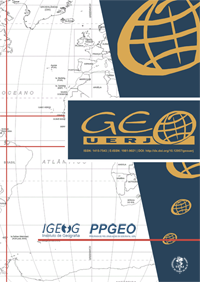CONTRASTES NA AGRICULTURA FLUMINENSE: O TRADICIONAL E O MODERNO NO PROCESSO DE COMERCIALIZAÇÃO AGRÍCOLA
DOI:
https://doi.org/10.12957/geouerj.2016.23485Palavras-chave:
espaço rural fluminense, permanências e mudanças no campo, rede de comercialização agrícola.Resumo
doi: 10.12957/geouerj.2016.23485
A análise das atuais transformações no campo torna-se fundamental pois, além de desempenhar as funções tradicionais de fornecer mão de obra e matérias-primas para a cidade e consumir produtos dela oriundos,o campo abriga, cada vez mais, atividades não agrícolas como a produção industrial e os serviços associados às atividades de turismo, que valorizam as áreas com aspectos naturais. Esse processo ocorre intensamente no estado do Rio de Janeiro, afinal este apresenta uma configuração territorial marcada pelo intenso processo de urbanização. Destarte, o objetivo central desse trabalho é o de compreender como o tradicional e o moderno atuam concomitantemente no processo de comercialização agrícola, e como o setor mais moderno de produção agrícola absorve a produção e os excedentes dos produtores tradicionais, compreendendo assim permanências e transformações na agricultura fluminense como elementos convergentes.
Downloads
Downloads
Publicado
Como Citar
Edição
Seção
Licença
Os Direitos Autorais dos artigos publicados na Revista Geo UERJ pertencem aos seus respectivos autores, com os direitos de primeira publicação cedidos à Revista. Toda vez que um artigo for citado, replicado em repositórios institucionais e/ou páginas pessoais ou profissionais, deve-se apresentar um link para o artigo disponível no site da Geo UERJ.

Os trabalhos publicados estão simultaneamente licenciados com uma Licença Commons BY-NC-SA 4.0.


